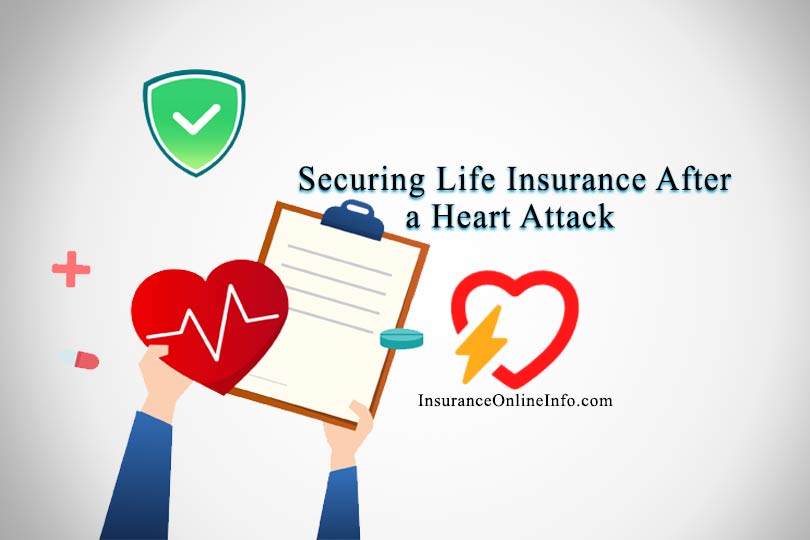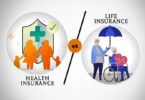If you’ve experienced a heart attack and are considering life insurance options, rest assured that obtaining life insurance after a heart attack is possible. While it may require careful evaluation and consideration from insurers, understanding the factors that impact life insurance rates after a heart attack can help you secure a suitable policy. Age at the time of the heart attack, heart attack severity, healthier lifestyle choices, and absence of multiple health conditions are all key elements that insurers take into account when determining premiums for life insurance after a heart attack. By providing accurate information and demonstrating a commitment to a healthier lifestyle, you can find affordable life insurance coverage, offering financial protection for your loved ones in the future.
Surviving a heart attack may prompt you to consider obtaining life insurance, providing financial security for your loved ones. While it’s possible to get life insurance after a heart attack, the process involves careful evaluation by underwriters. Understanding the risk factors associated with heart attacks and how insurers assess applicants’ medical history can help you secure a suitable policy. In this article, we delve into the factors that impact life insurance rates post-heart attack and explore the types of life insurance products available for individuals in this situation.
Risk Factors Affecting Life Insurance Rates After a Heart Attack
Various risk factors influence life insurance rates for individuals who have experienced a heart attack. These factors include:
- Age: Individuals over 45 (men) and 55 (women) are at a higher risk of heart attacks.
- Cholesterol Levels: High cholesterol, triglycerides, or hyperlipidemia increase the risk of heart attacks.
- Other Associated Risks: Diabetes, obesity, genetics, chest pain, stress, high blood pressure, and a sedentary lifestyle also contribute to heart attack risk.
Understanding Life Insurance After a Heart Attack
Life insurance companies’ perceptions of heart attacks may vary, making it essential to approach providers strategically to secure reasonable premiums. Being forthcoming with accurate information about your heart condition, recovery, and lifestyle changes can help lower insurance rates. Key factors that influence affordable life insurance after a heart attack include :
- Age at the Time of Heart Attack: Younger age at the time of the heart attack is favorable for insurance rates.
- Timing for Insurance Application: Contact your insurer approximately 6 months after the heart attack, allowing you to discuss recovery and lifestyle changes effectively. Some insurers may consider coverage after 90 days, but immediate coverage may not be granted.
- Heart Attack Severity: The extent of damage caused by the heart attack affects insurance rates. Less severe cases may qualify for preferred ratings, while more severe cases may receive standard rates.
- Healthier Lifestyle Choices: Following medical advice, engaging in frequent stress tests and echocardiograms, quitting smoking, maintaining cardio exercise, limiting fatty food intake, managing stress, and reducing alcohol consumption can positively impact insurance rates.
- Ejection Fraction: A higher ejection fraction (above 50%) indicates better heart function and may result in lower premiums.
- Absence of Multiple Health Conditions: Not having multiple health conditions, such as diabetes or high blood pressure, can lower insurance rates.
Types of Life Insurance Options
Despite experiencing a heart attack, individuals still have life insurance options, depending on their medical history:
- Term Life Insurance: While term life insurance offers less expensive rates, it typically requires a medical exam, making it less suitable for those with heart attack history.
- Guaranteed Whole Life Insurance: This type of insurance doesn’t require a medical exam and provides coverage for life. However, it comes with higher premiums.
- Universal Life Insurance: A permanent life insurance product with investment options and flexible payments, making it suitable for individuals with medical expenses.
- Critical Illness Insurance: This can be added as a rider or standalone insurance, providing coverage for medical expenses during one’s lifetime.
Securing life insurance after a heart attack is possible, with various factors influencing the rates and types of policies available. Providing accurate information about your heart condition, following medical advice, and considering various life insurance options can help you find the most suitable coverage for your needs. By understanding how insurers assess applicants post-heart attack, you can make informed decisions and ensure financial protection for your loved ones.





